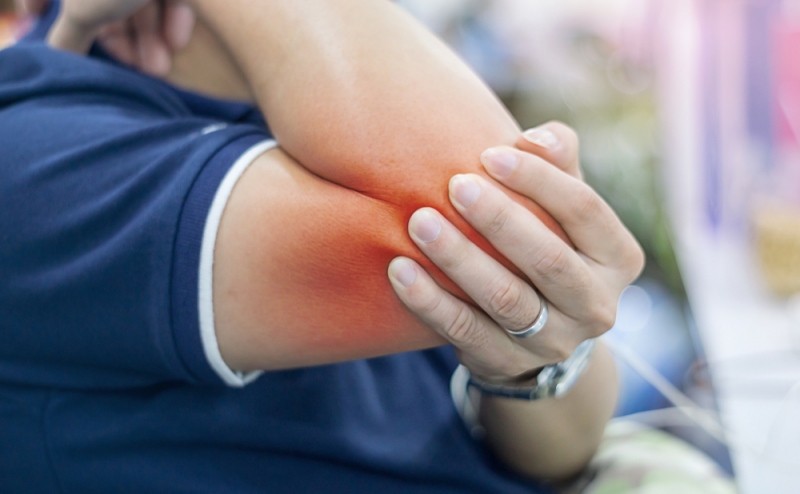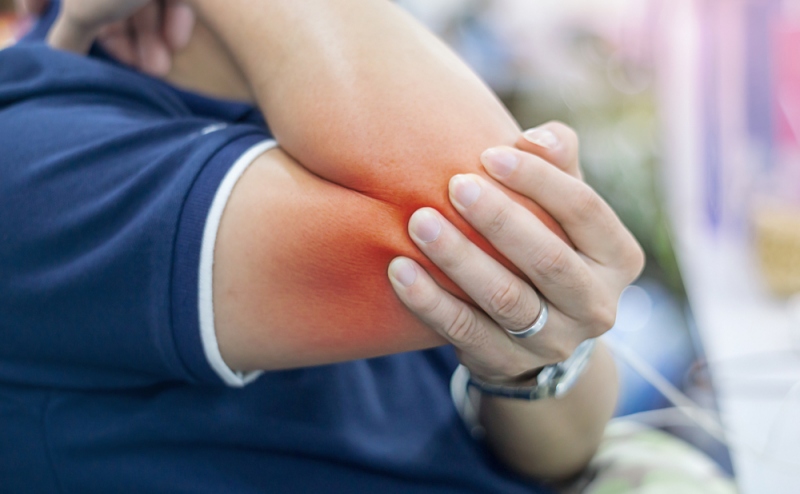Lateral epicondylitis or “tennis elbow” is a disease commonly seen in athletes and those involved in strenuous physical activities. The condition affects the elbow and is increasingly common in athletes, particularly those involved in sports that require heavy use of the elbow, like tennis or badminton. Other than athletes, the condition may also affect people who are exposed to hard physical labour or activity.

The condition normally affects individuals between the age of 30 and 50, although people in their 20s may also be affected by it. The tendon, or the link between the forearm muscles and the elbow joint, becomes damaged and inflammation occurs as a result of overuse. This leads to harsh, concentrated pain around the elbow, and spreads towards the outside of the elbow area. Apart from tennis, common jobs like painting, carpentry and even masonry may result in microscopic tears in the forearm muscle. It mainly occurs due to heavy weight-lifting and repetitive motions.
In many cases, the treatment involves multiple facets, like medication along with physiotherapy to let the arms heal. However, open tennis elbow repair surgery in India is also conducted, in cases where it is required. The onsets of symptoms are slow at first, so it is hard to diagnose. The symptoms start as light pain around the elbow, and last for several weeks before the pain starts to magnify. It is also observed that the grip strength reduces, in patients. In most cases, it is the dominant arm which is most affected.
In around 80% of the cases, non-surgical treatment can be carried out successfully. This involves treatment including heavy periods of rest, anti-inflammatory medicines, physical therapy and the use of a brace to limit the motion of your arm. However, if the arm does not respond after non-surgical treatment, open tennis elbow repair treatment in India is the only viable method.
The surgery procedure basically involves removal of the affected muscles, and reattaching the bone to the surrounding healthy muscle. The affected tendon is cut and released, in the first step. The inflamed tissue around the tendon is then removed with precision, to reduce the extent of the condition. The tendon is then reattached to the muscles of the forearm, without tightening the tendon link too much.
In most cases, the procedure is carried out under local anesthesia. However, general anesthesia is used in patients where it is deemed necessary. The procedure is done through an incision made over the affected area. Patients are not usually required to stay at the hospital overnight, and are made to do so only if complications arise during the procedure.
Following the operation, care must be taken to facilitate complete healing of the elbow area. The arm is usually immobilized using a splint and sutures, for as long as seven days after the procedure. Physiotherapy is started after the splint is removed, so as to bring the elbow back to its initial condition and restore the flexibility of the arm. Return to the causal activity is only after 4 to 6 months, and there might be changes to the method of doing the activity. Loss of strength in the arm is also a commonly seen side-effect in patients.
Through PSTakeCare, you can compare doctors who carry out open tennis elbow surgery and even book surgery packages online. So make sure to choose the right doctor, before you move into the treatment phase!



